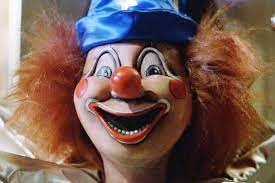Table of Contents
Introduction
Clown makeup is a timeless art form that has captivated audiences for centuries with its whimsical designs, exaggerated features, and colorful expressions. In this article, we embark on a journey to explore the rich history, cultural significance, and artistic techniques behind clown , uncovering the magic and mastery that lie beyond the big top.
The History of Clown Makeup

The origins of clown makeup can be traced back to ancient civilizations, where performers adorned themselves with colorful pigments and exaggerated features to entertain and amuse audiences. In medieval Europe, court jesters and traveling minstrels used makeup to enhance their comedic performances and bring characters to life.
However, it was not until the 18th century that clown began to take on its distinctive characteristics and symbolism. In 18th-century England, Joseph Grimaldi, known as the “father of modern clowning,” revolutionized the art form with his iconic white face paint, exaggerated features, and slapstick humor. Grimaldi’s groundbreaking approach to clowning laid the foundation for the iconic clown archetype that endures to this day.
The Evolution of Clown Makeup
As clowning evolved and spread across cultures, so too did the art of clown. In the 20th century, iconic clowns such as Emmett Kelly, Red Skelton, and Charlie Chaplin brought new dimensions to clowning with their unique styles and personas. From the silent film era to the golden age of television, clowns became beloved figures in popular culture, enchanting audiences with their antics and charm.
In the realm of circus clowning, makeup became a vital tool for creating distinct characters and conveying emotions to audiences seated in the far reaches of the big top. Each clown developed their own signature makeup design, incorporating elements such as exaggerated eyebrows, oversized noses, and colorful accents to define their persona and engage with spectators.
The Artistry of Clown Makeup

Clown makeup is more than just face paint—it is a form of artistic expression that requires skill, creativity, and precision. Each element of clownserves a purpose, from the stark white base that symbolizes innocence and purity to the exaggerated features that evoke laughter and amusement.
The process of applying clown is a meticulous ritual that begins with a clean, moisturized face and a carefully crafted design. Using professional-grade face paints, grease paints, and theatrical makeup, clowns carefully layer colors and textures to create the illusion of exaggerated features, expressive expressions, and larger-than-life personalities.
Key components of clown makeup include:
White base: to create a blank canvas for the exaggerated features and colors.
Bright colors: to accentuate features such as the eyes, lips, and cheeks, drawing attention and conveying emotions.
Exaggerated features: such as oversized eyebrows, elongated smiles, and exaggerated noses, to enhance expressions and engage with audiences.
Finishing touches: such as highlights, shadows, and glitter, to add depth, dimension, and sparkle to the overall design.
The Impact and Legacy of Clown Makeup
Clown makeup holds a special place in popular culture, transcending language and cultural barriers to evoke laughter, joy, and wonder in audiences of all ages. From the whimsical clowns of the circus to the iconic characters of film and television, clown has become synonymous with laughter, entertainment, and the enduring power of imagination.
Conclusion
In conclusion, clown makeup is a timeless art form that continues to captivate and inspire audiences around the world. From its humble origins in ancient civilizations to its modern-day interpretations in circus, theater, and entertainment, clown reflects the creativity, artistry, and humanity of the performers who bring characters to life with a splash of color and a twinkle in the eye.
For More Information Please Visit These Websites Mindmeister
Your article helped me a lot, is there any more related content? Thanks!